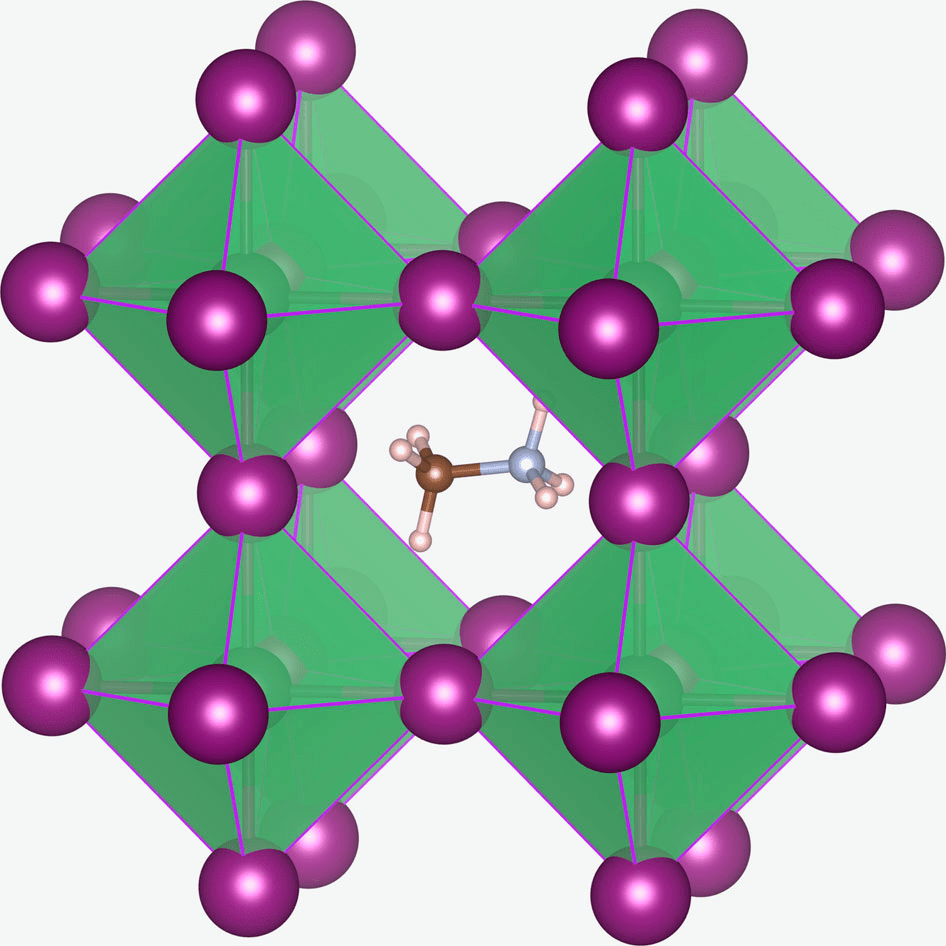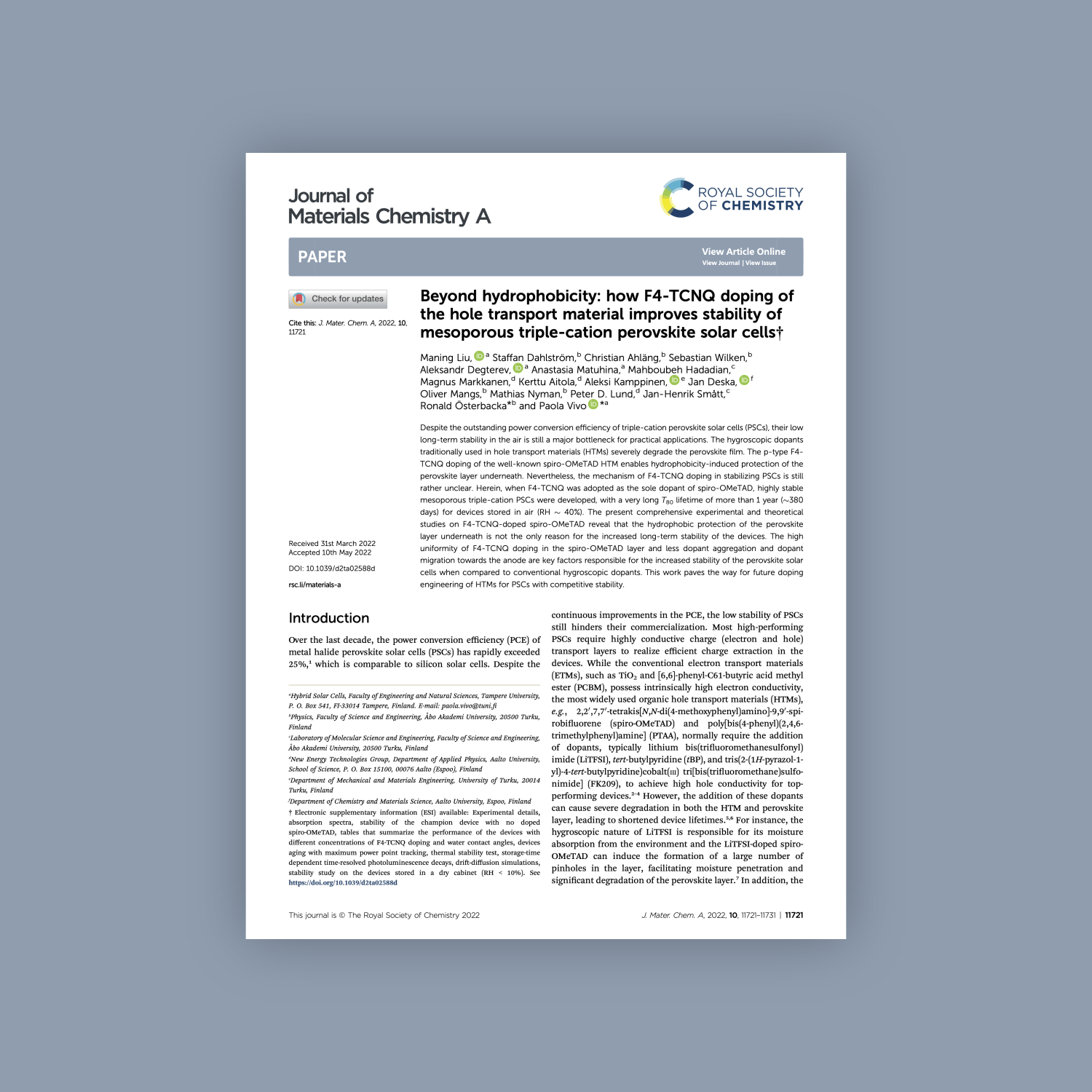Oh I’m late to the party, but I just published my first paper on perovskite solar cells.
Well, I should say: I contributed my little part to it. The work is a result of a bigger Finnish research project including people from Åbo Akademi University, Tampere University and Aalto University, and I helped out with some data analysis and writing.
In the study published in the Journal of Materials Chemistry A we look at interfaces and how they affect the lifetime of perovskite solar cells. Specifically, we describe a new, simple and reliable way to dope the hole transport layer, which enables solar cells with a much higher long-term stability.
The Stability Issue
It must be ten years now that I first heard of perovskite solar cells. The record efficiency at that time was around 6% and they were considered a curiosity rather than a serious research subject. The situation could hardly be more different today. With 25%, the efficiency is on par with silicon solar cells, even though the latter have decades of advantage in research and development.
What makes perovskite solar cells even more astonishing is that they can be processed inexpensively from solvents, just like organic solar cells. With this they hold great promise for the electricity supply of the future.
However, nothing comes for free.
The big issue with perovskite solar cells is stability. Typically, their efficiency drops within months, while there are silicon solar cells from the 1970s that are still up and running.
One reason why they degrade so quickly lies in the charge transport layers, which are usually inserted between the perovskite absorber and the contacts to improve charge separation and transport. These layers often consist of organic materials doped with additional molecules or ions.

In many cases the dopants are not stable or attract foreign substances such as water and oxygen, which can degenerate both the perovskite and the transport layer.
We took a closer look at the benchmark hole transport material spiro-OMeTAD. Typically, it’s doped with three different dopants, including a hygroscopic lithium salt. This is not only complicated but also one cause of the stability issues mentioned above.
Our approach was to replace the complex dopant mixture with a single hydrophobic material called F4TCNQ. We found that while the solar cells with F4TCNQ doping initially have slightly lower efficiency than conventional devices, they show much improved long-term stability. After one year, they still exhibit over 80% of their original performance. This is an outstanding result for perovskite solar cells.
My Role
In the paper we show how F4TCNQ improves a number of properties such as the electrical conductivity and morphology of the transport layer. Through ultrafast photoluminescence measurements, we also demonstrate how the extraction of holes is improved, and this is where I came into play.
Through my work on organic solar cells, I have some experience in performing and analyzing time-resolved measurements. So I took the photoluminescence raw data from Tampere University and subjected them to new numerical methods developed specifically for perovskites. This way I could evaluate how doping affects the carrier lifetimes and the surface recombination velocity at the interface, which added a nice little piece of evidence to the story.
Personally, this was a very satisfying project. It showed me once more that with the right tools in your box, you can tackle any problem. At least as long as science is concerned.
Reference
Maning Liu et al. Beyond hydrophobicity: how F4-TCNQ doping of the hole transport material improves stability of mesoporous triple-cation perovskite solar cells. J. Mater. Chem. A 10, 11721 (2022)
